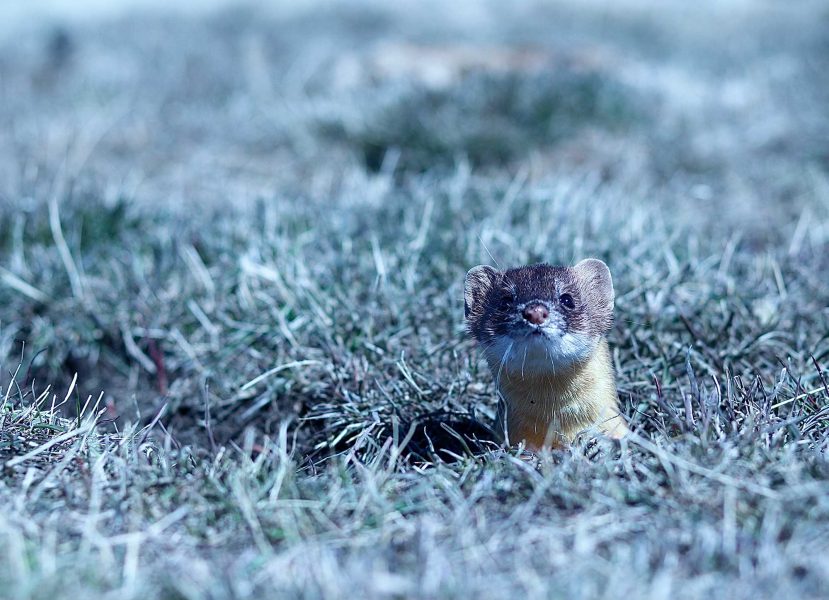
Here’s how to take better photos while you’re out adventuring
Photographing wildlife can be fun and exciting. Wildlife is elusive, intriguing and often unique to the geographic area where you’re adventuring. Wildlife photography is also a rising hobby for thousands of photographers across the globe, and as technology advances, even the cameras on smartphones can help you capture amazing photos of wildlife.
There’s something very special about capturing an untamed “wild” animal on camera — especially when you’re on the other end of the lens. When you photograph wildlife, you’re photographing a moment in time. It’s a memory. It’s a record in history. And it’s all up to you to get it right. You can’t ask wildlife to move or act a certain way. You work with what you have.
But wildlife photography can also be hard. It may not be easy to frame your subject. For example, when a bird lands on a branch near you, you may only have a couple of seconds to get the shot. Or, if a bison is walking away and not looking at you, it can be frustrating for a wildlife photographer who really wants to capture an image of the bison’s face.
Photographing wildlife is easily becoming one of my favorite types of photography. In my home state of Montana, I’m surrounded by a myriad of species. It would take me a lifetime to photograph them all.
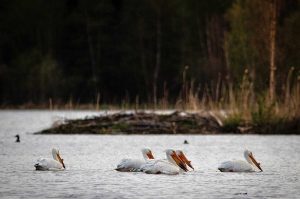
There’s nothing like the feeling of photographing a beautiful creature (big or small). When you’re in the right place at the right time to experience wildlife in their natural habitat and create a stunning photograph, it’s a wonderful feeling. I’m not sure if a “photographers high” is a thing, but if it is, I’ve definitely had it on numerous occasions, and you may have experienced it too — the feeling of seeing a wild animal and getting a nice photograph of it to keep forever.
And I want to help you capture the best images possible. Here are 10 wildlife photography tips you can use to take better wildlife photos:
1) Use the equipment you have
Although an expensive telephoto lens on a digital camera can get you a sharp close-up image of wildlife, a smartphone camera can also achieve stunning wildlife shots. There’s a need for both. Think about it. A close up shot of a bull elk can be a visually appealing photograph. But a landscape photograph of a bull elk silhouetted with a sunset in the background can be equally as stunning. Not all wildlife photography needs to be a tight close up shot. Use the equipment you have and get to know its features. If you have a smartphone camera, research some apps you can use to improve your photo experience. If you have an older digital camera, what settings can you use to make your photos better? Invest in new photography equipment as you’re able, but in the meantime, use what you have now and practice photographing wildlife any chance you get.
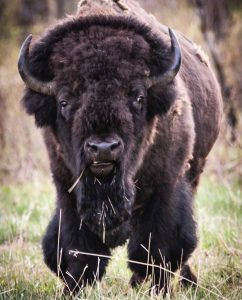
2) Pay attention to your background
Whether you’re photographing an ant or an elephant, pay attention to your background. Is there a branch rising above the animal that looks odd? Is there something cut off on the edge of the frame or something distracting in the background (like a hiker in bright orange)? Having patience or moving so you have a better angle can help you create better wildlife photography. For example, if you’re photographing an ant on a leaf, instead of pointing your camera straight down at the ant — giving you a background of dirt and sticks — try lying on the ground and pointing your camera at the ant’s level with a blue sky in the background. Experiment with different angles while paying attention to your background. What looks best? What’s distracting?
3) Use the rule of thirds
Using the rule of thirds will help you improve your photo composition (how the elements in your photo are arranged). Split your photo into nine segments by using three horizontal lines and three vertical lines. Sometimes your digital camera or smartphone camera has a feature that allows you to actually see this grid on your screen. Try placing key elements of your image in one or more of the areas where the lines intersect. It’ll make your composition much better.
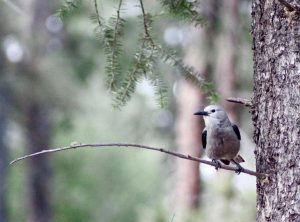
4) Shoot in burst or continuous shooting mode
For a better chance at capturing the right moment, try using a continuous shooting mode. Most cameras have this option and allow you to shoot several frames with just one push of the trigger. Shooting in burst mode may help you get that dream shot of the animal looking right at you or in action. Have patience.
5) Frame your subject
Using what’s around you in nature, try framing your subject. Is there a monkey in a tree? A woodpecker on the edge of a tree? Use the surrounding foliage to create a frame around your subject.
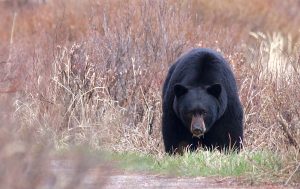
6) Be safe
Wildlife can be unpredictable. Know your area. Learn the animal behavior of the species you may encounter. Are there bears? Alligators? Mountain lions? Bison? Always be knowledgeable of an area before you enter it. If you’re photographing wildlife in a national park, know the rules. National parks have a minimum distance of 100 yards for grizzly bears and wolves and 25 yards for most other wildlife.
7) Use auto focus
Since wildlife can move fast, try sticking with auto focus. This will give you a higher chance of your subject being in focus. For example, if you’re trying to capture a snowshoe hare hopping across a snowy field, using autofocus and keeping the snowshoe hare in your frame will allow you to keep your image sharp.
8) Be patient
Animals in the wild are on their own schedule. You can’t expect to go on a hike to a lake in Montana and instantly see a moose crossing — posing just for you. It could take hours for the moose to show up, or days. Or it may not show at all. For a lot of wildlife, dusk and dawn can be prime hours for the most activity. Try sitting in one spot to observe and wait. Being patient can often lead to an unexpected encounter and a beautiful image.
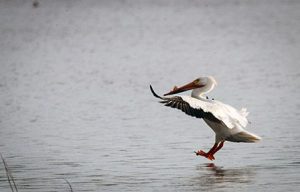
9) Practice
The more you get outdoors to practice your wildlife photography, the more you’ll learn. And you don’t need to go on an African safari to practice. Start locally. Your backyard or a local park may have various species of wildlife you can photograph. Play around with your composition. Try different ways of framing animals. Take time to really see your background. Try photographing wildlife at different angles. Just practice. You can always delete images. And you’ll get better over time.
10) Invest in a telephoto lens
If you’re ready to take your photos to the next level, invest in a telephoto lens. Using a telephoto lens can broaden your photography scope and give you more opportunities to capture wildlife close up and personal while staying at a safe distance.
Suzanne Downing is an outdoor writer and photographer in Montana with an environmental science journalism background. Her work can be found in Outdoors Unlimited, Bugle Magazine, Missoulian, Byline Magazine, Communique, MTPR online, UM Native News, National Wildlife Federation campaigns and more.
 Your Privacy Choices
Your Privacy Choices
 The
The